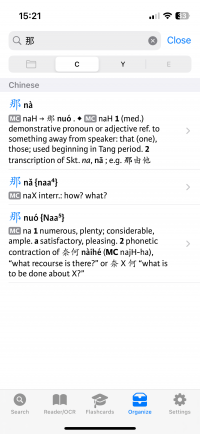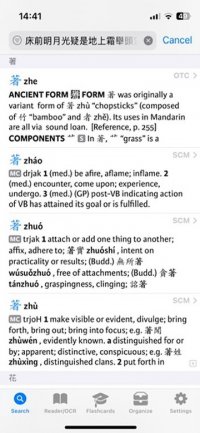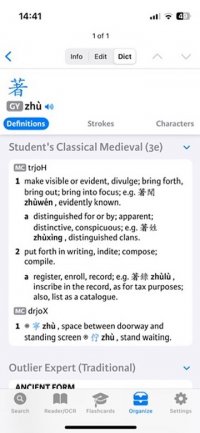I can aggregate them by hand, yip (i create two cards, paste the text from one into the other, then delete it), I'm just confused about how I managed to get a nicely-formatted aggregate version before. I don't remember tweaking cards.
Looking at another old card that has two definitions attached to it, 王 (
`py:wang2`{.-w_zho .-se}
{{pleco:e?d=PSDC&e=00018280}}
---
`py:wang4`{.-w_zho .-se}
{{pleco:e?d=PSDC&e=00018281}}), when I search for 王 in the dictionary I see that both entries have the "I have a flaschard" +-symbol next to them in the search results:
Whereas my hand-aggregated 為 (with entry body "{{pleco:e?d=PSDC&e=000184B0}}
---
{{pleco:e?d=PSDC&e=000184B1}}") only has a + next to the first entry.
I also notice that the card for 王 has no pronunciation fields set (deleting the pronunciation fields from 為 doesn't make a difference though it seems).
I'm confused how these older multiple-pronunciation cards came to be, why they seem to retain links to multiple entries while the cards I make don't, and why I don't seem to be able to automatically produce them anymore (I believe I used to be able to to do).




